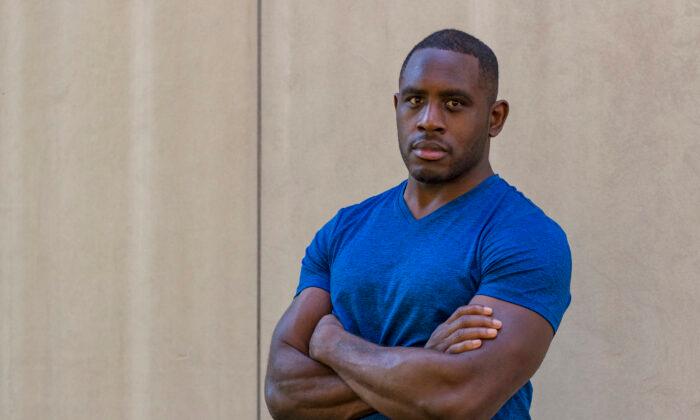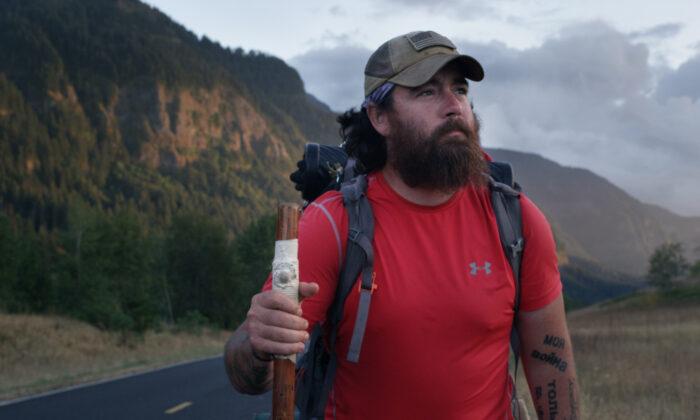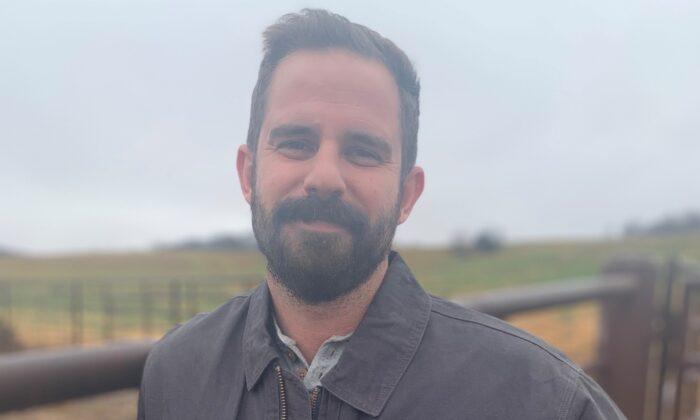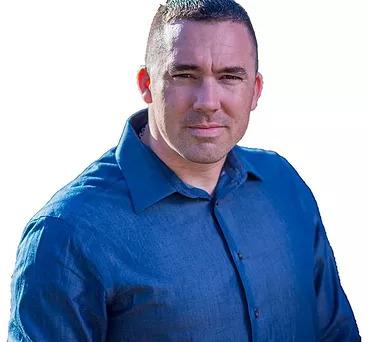When someone survives an event that in all likelihood should have been fatal, they are often left traumatized and wondering why they survived. Two U.S. Air Force veterans survived two very different near-death experiences, and have helped each other heal. Now they are living intentional lives and encouraging others to do the same.
Chris “Elroy” Stricklin is 47 years old and lives in Birmingham, Alabama. In 2003, he was performing a maneuver during the Thunderbirds Air Show. He took off, flew straight up, and flipped upside down. While trying to complete the back half of the loop, the aircraft lost altitude and crashed. The entire flight lasted 25 seconds.
Stricklin was able to eject from the aircraft, but he ejected “out of the envelope,” meaning he was outside the parameters of a survivable ejection. He ejected from the plane just 40 feet from the ground and landed in the ensuing fireball.
Miraculously, Stricklin walked out of the hospital the same night with a strained back and no broken bones. Stricklin was understandably traumatized but kept it to himself. He continued to fly until 2017.

“I went from 2003 to 2017 still flying an aircraft, and still getting in ejection-seat aircraft and trying to deal with that on my own instead of talking to people, talking to my wife, talking to Joel [Neeb], and others like me, other survivors out there, and I think it had a negative impact,” Stricklin told The Epoch Times.
A Fellow Pilot’s Trauma
Fellow Air Force pilot Joel “Thor” Neeb is 42 years old and lives just north of Atlanta. He flew for 14 years and experienced a very different yet most likely unsurvivable trauma. In March 2010, he was diagnosed with a rare stage 4 cancer in his appendix at age 33.Initially, doctors had told him that there was something wrong but it probably it wasn’t cancer. However, over time and after a surgery, they finally discovered the disease.
“It’s really about a month-long period of just getting hit after hit of bad news, and so it’s just literally living a nightmare for a long period of time as the news just gets worse and worse,” Neeb said.
Every night, Neeb found himself staring at the ceiling fan for hours wondering how something like this could happen to him. After not sleeping, he spent his days exhausted just waiting for the next night to come.

He found himself in despair, and felt like his situation was unfair. He had always lived a healthy lifestyle, and never imagined something like this cancer diagnosis would happen to him. His children were 1 and 3 years old at the time, and he had to make videos saying goodbye to them.
Neeb underwent an extensive surgery, and doctors removed cancer from his appendix, large intestine, small intestine, and bladder. Following his surgery, Neeb underwent chemotherapy as doctors couldn’t be sure that they had removed all of the cancer.
After chemotherapy, Neeb’s physical side effects started to subside. Doctors told Neeb this was his window of time to go do something for himself and his family because they told him he would most likely receive bad news following his treatment.
A Moment of Clarity
Neeb went to his following appointment a few months later, and his condition had improved. Doctors again told him to take advantage of the next few months.During his treatment, Neeb had an experience when he walked into the hospital and realized he was most likely going to die there before Christmas. He wept, and prayed to God for help. He looked up, and locked eyes with a 10-year old little girl with a bald head and a surgical mask.
“I can tell in that moment that she’s afraid, and she’s afraid like I am. In that second, all of my self-pity went away, and all I could think was ‘I’m the luckiest guy in the world. I’m a fighter pilot. I’m 33 years old. I’ve got a beautiful family. God don’t help me, help that little girl because she’s not going to live to be a teenager,’” Neeb recalled thinking.

That moment showed Neeb that he had to opportunity to respond to his illness, and any other trauma in life. He had gone from a lowest point in his life to only caring about this little girl.
In October 2010, Neeb was in remission. However, he still had to contend with the fact that the cancer could return.
Veterans Helping Veterans
Stricklin and Neeb met at a consulting company that they both worked at called Afterburner. Neeb knew who Stricklin was, and had seen the footage of his crash. Stricklin was also aware of Neeb’s battle with cancer.While the two traveled for work in 2016, they told each other pieces of their respective stories. The two found that the similarity between their stories wasn’t the trauma itself. They started seeing similarities in where their paths headed after trauma.
The two plotted out a graph called Life Line to help each other share their stories with one another, and process their respective traumas.
The X-axis represented time, and points above the axis represented positive experiences, while points beneath the axis represented traumatic experiences in their life.
Both discovered that theirs was a trend line that was much more positive following their traumatic experiences over time. They found that talking to each other about their traumatic experiences had helped them heal, and the two now talk almost every day.

However, writing and talking about their experiences also became therapeutic.
While the book discusses their respective traumas, the two try to convey that everyone has their own traumas and that everyone can learn from them and grow. The book also discusses the lessons they’ve learned, and features the major themes of growth, giving, and gratitude.
Moreover, the primary message behind the story is what they call “survivor’s obligation,” which is the duty to live an intentional life following a traumatic experience one shouldn’t have survived.
“The compass only works when you have a destination, and having those guiding principles is so critical to defining where you’re going and that meaning that we’ve discovered again and again is central to happiness in life,” Neeb said.






